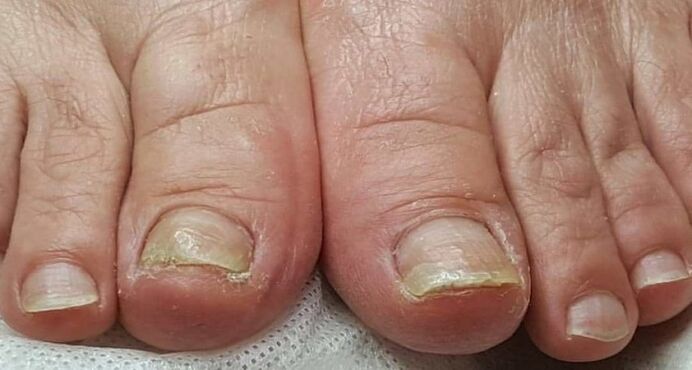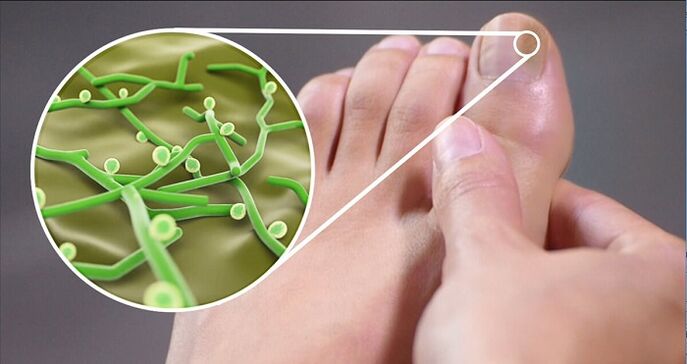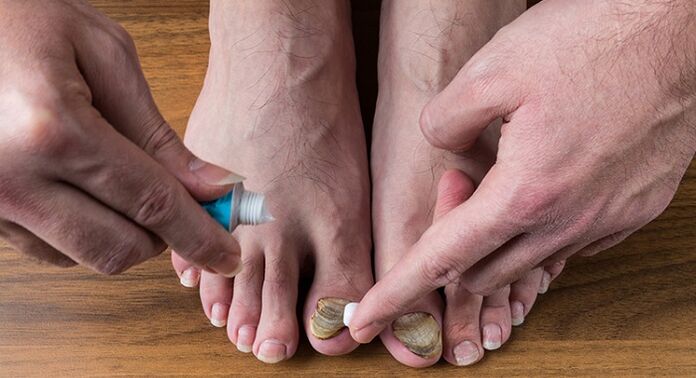Despite the spread of this infection, few people know what a fungus looks like on the legs. Out of ignorance, many people mistake a yeast infection for a frequent irritation or allergic reaction. Therefore, they start treatment at an advanced stage as the disease progresses. Fungal infections are resistant, according to statistics, 20% of the total population are susceptible to them.
What does a fungal infection look like?
The fungus belongs to the category of infectious diseases that affect the skin mainly on the feet. There are several types of the disease, but the most common is mycosis. The mushroom is resilient, it can adapt to almost all conditions. Often times, even if a person gets rid of the disease, relapse is inevitable because fungal spores continue to live in clothes and shoes. In most cases, the mycosis affects the nail plates and the skin of the feet.
Few people know what athlete's foot looks like. There are several types of mushrooms, each with its own symptoms and manifestations:
- The initial stage of the fungus manifests itself in reddening of the skin, swellings and microcracks.
- The fungus continues to progress, and the skin peels off and becomes covered with reddish-pink spots.
- If the disease is not treated properly, the fungal infection will spread to the nail plates, changing their color, shape, and structure.
The last stage is characterized by peeling of the skin, as well as the appearance of deep cracks, causing pain and bleeding. At all stages of development, the fungus manifests itself on the toes as itching, which is often unbearable. To accurately depict the appearance of the disease, just look at the pictures on this topic.

The process of a fungal infection
The fungus affects people regardless of their age and professional activity. The infection can easily be passed from one infected person to a healthy person (especially when putting on someone else's shoes). You can also get infected in public places like baths, saunas, and swimming pools. As the fungus gets on the skin, it gradually begins to destroy the nail plates as it moves through the body. Therefore, the advanced stage of the disease is only suitable for complex therapies (creams, ointments, drops and tablets).
The risk group for contracting a fungal infection includes certain groups of people:
- Company employees who take a public shower after a work shift;
- People who do sports professionally;
- Military personnel (mostly seafarers);
- Utility workers;
- Miners.
Fungal infections often affect housewives and people whose job duties are directly related to water.

Skin fungus: diagnosis and treatment
Having learned what a fungus looks like on the legs, you can immediately identify this disease. However, self-medication is inappropriate in this case, since it is first necessary to identify the type of pathogen and its form. This can only be done in a medical facility. If, on the basis of external signs, a person suspects that he has a skin fungus, he must urgently consult a dermatologist.
It is imperative that the specialist conduct an initial examination of the patient, carry out the necessary tests (complete blood count, microscopy). If the diagnosis is confirmed, the necessary treatment will be prescribed to the person. These can be creams, topical ointments, and oral tablets. Only the doctor decides how to treat the disease. It is not recommended to prescribe antifungal drugs to yourself.

Home remedies
At the initial stage of the development of the disease or in addition to drug treatment, traditional medicine is perfect. There are several ways to get rid of athlete's foot. To cure the fungus on the skin, it is recommended to make a tincture of plantain or chamomile flowers. To do this, you will need 2 tbsp. l herbs and pour 200 ml of boiling water. The tincture must be cooled, there it is poured into a basin and the lower legs for 15-20 minutes. After that, thoroughly wipe your feet with a paper towel and smear them with birch tar. Pay special attention to the affected skin. The process must be repeated every day until the signs of the disease have completely disappeared.
If the nail plates were affected by the fungus, the treatment will be longer. Traditional medicine uses iodine and 9% vinegar most often. It is necessary to combine the liquids in equal proportions and lubricate the affected nails with the resulting medicine. In this case, it is advisable to saw off the nail plate as much as possible.
Folk remedies are very effective in some cases. However, it is not recommended to use them at an advanced stage of the disease, when the fungal infection has already entered the bloodstream. In this case, it is better to contact specialists who will be able to recommend not only competent, but also safe treatment.
Fungal skin does not cause any significant harm to human health, but it very often causes discomfort because the affected areas of the skin and nails do not look very attractive. The presence of such a disease prevents a person from gaining access to public places (swimming pools, saunas, water parks), although in these facilities the infection is common. As a preventive measure, you need to follow the rules of personal hygiene and monitor your health.



























